The 4 Most Common Eye Problems in English Bulldogs and How Breeders Can Avoid Them


The 4 Most Common Eye Problems in English Bulldogs and How Breeders Can Avoid Them

Some Context From Mitch
As dedicated English Bulldog breeders, we’ve spent over 15 years researching, documenting, and addressing the health concerns that commonly affect this beloved breed. One area that demands particular attention is eye health. In fact, eye issues rank as the second most frequent health issue we see in English Bulldogs (breathing issues are always #1)
But here’s the good news: these problems aren’t inevitable. Through careful breeding practices, meticulous record-keeping, and a commitment to putting health first, we’ve dramatically reduced the incidence of eye disorders in our bloodlines. This article will explore the five most common eye issues affecting bulldogs, explain their causes, and share how our breeding program at Bruiser Bulldogs has successfully minimized these problems.
Understanding Bulldog Eye Issues: A Matter of Structure and Genetics
Before diving into specific conditions, it’s important to understand why bulldogs are particularly susceptible to eye problems. Much of this vulnerability stems from their distinctive facial structure:
- Brachycephalic (flat-faced) anatomy: The shortened skull of bulldogs places their eyes in a more exposed position, making them vulnerable to injury and irritation.
- Facial wrinkles: Traditional bulldog wrinkles, especially when excessive, can create friction against the eyes or trap moisture and bacteria.
- Prominent eyes: Bulldogs have relatively large, round eyes that protrude somewhat from their sockets, increasing their exposure to environmental irritants.
- Eyelid structure: The shape and positioning of bulldog eyelids can predispose them to various disorders.
While these physical characteristics define the breed we love, they don’t have to doom bulldogs to a lifetime of eye problems. Through careful health screening and record keeping, eye issues in English Bulldogs can be dramatically reduced and even eliminated from carefully managed bloodlines.
Let’s examine the five most common eye problems affecting bulldogs and how we address each one through our breeding program.
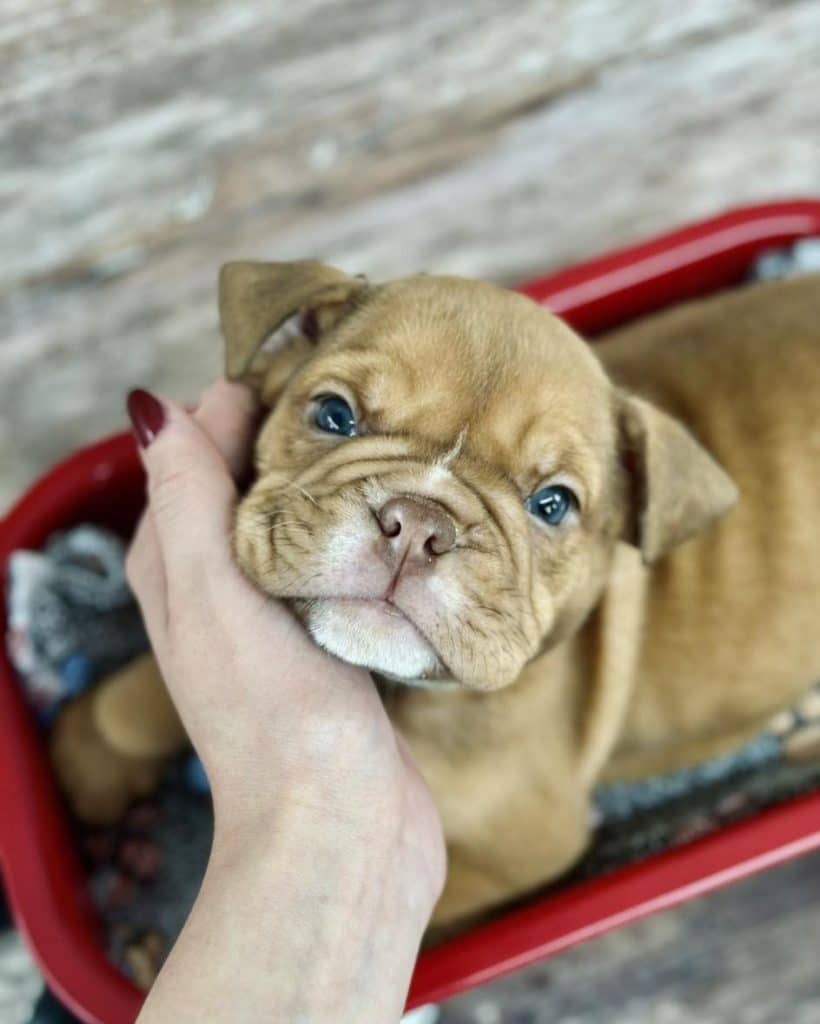
1. Cherry Eye: More Than Just an Environmental Issue
Cherry eye is perhaps the most recognizable eye condition in bulldogs, characterized by a red, swollen mass that appears in the corner of the eye. This condition occurs when the tear gland in the third eyelid (yes, dogs have a third eyelid!) becomes inflamed and prolapses, or “pops out” from its normal position beneath the eyelid.
What Causes Cherry Eye?
There’s been considerable debate among breeders about whether cherry eye is primarily genetic or environmental. Many breeders dismiss it as merely an environmental issue, blaming factors like:
- Rough play and physical trauma
- Allergic reactions
- Irritants in the environment
While these factors can certainly contribute to or trigger cherry eye, we believe truth lies somewhere in a more nuanced story. We’ve observed some genetic patterns across bloodlines that do moderately suggest a genetic component. We have also observed many cases that are most likely caused by the pup’s environment.
Most likely BOTH environment and genetic predisposition play a role in cherry eye.
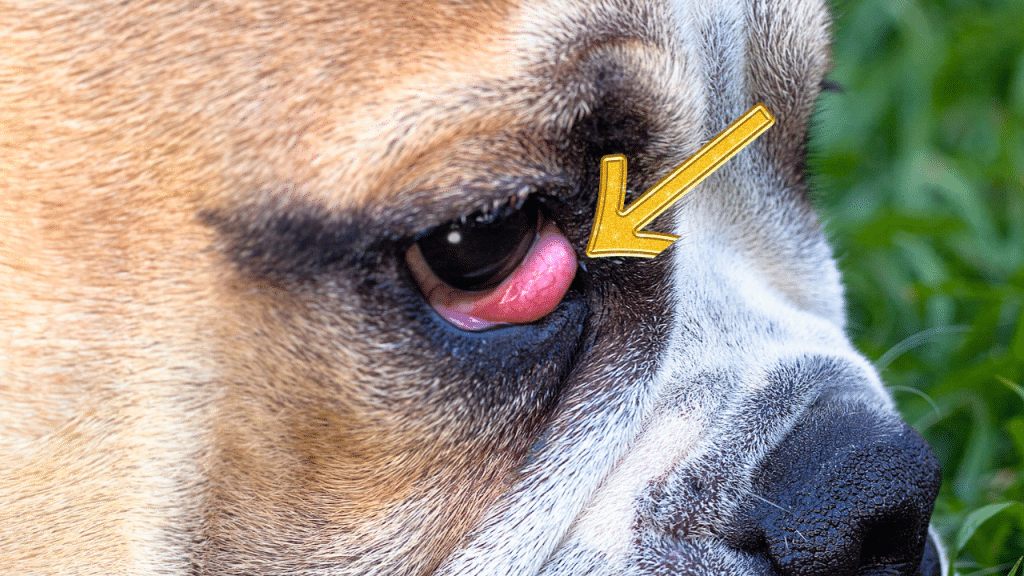
The Bruiser Bulldogs Approach to Cherry Eye
Unlike breeders who continue to breed dogs with a history of cherry eye (while blaming external factors), we’ve taken a different path:
- Strict health screening: We do not breed any dog that has experienced cherry eye, regardless of whether it was surgically corrected.
- Extensive record-keeping: We maintain detailed records of all health issues across generations, allowing us to identify and avoid problematic genetic lines. We try to discern between genetic and environmental issues to correctly find probable cause
- Environmental best practices: While genetics play a major role, we still educate owners about minimizing environmental triggers through proper cleaning, allergen management, and careful play.
The Results Speak for Themselves
Through this rigorous approach, we have significantly reduced cherry eye incidence in bruiser bulldog bloodlines from breed average occurrences. This success demonstrates that cherry eye, while common in bulldogs as a breed, is not an inevitable characteristic but rather a preventable condition when responsible breeding practices are employed.
2. Entropion: When Eyelids Turn Inward
Entropion is a painful condition where the eyelid (usually the lower lid) rolls inward, causing the eyelashes and fur to rub against the cornea. This constant irritation can lead to corneal ulcers, scarring, and potentially blindness if left untreated.
The Anatomical Connection
Entropion in bulldogs is closely tied to facial structure. Our years of observation have shown that the condition appears much more frequently in bulldogs with:
- Excessively wrinkled faces
- Extremely short snouts
- Heavy “nose ropes” (the thick wrinkle that runs across the top of the nose)
- Overly compact head structure
When a bulldog has a very short muzzle, the skin that would normally cover a longer snout becomes compressed, creating heavier wrinkles that exert upward pressure on the lower eyelids. This pressure gradually forces the eyelid to roll inward, often creating the painful entropion condition.
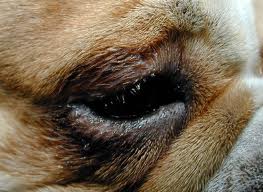
Redefining the Bulldog Standard for Better Health
At Bruiser Bulldogs, we’ve made significant changes to our breeding program to address this structural issue:
- Moderate face structure: We focus on breeding bulldogs with a slightly more extended snout, which allows facial skin to sit more naturally without excessive wrinkling.
- Reduced wrinkle set: Our bulldogs maintain the characteristic bulldog look but with a lighter wrinkle pattern that doesn’t create pressure on the eyes.
- Athletic build: We promote a more athletic, functional body type that complements the more moderate facial features.
Measurable Success in Reducing Entropion
Through our focus on more moderate physical features, we’ve reduced entropion incidence to less than 0.5% in our bulldogs. This stands in stark contrast to the much higher rates seen in heavily wrinkled, extremely flat-faced bulldog lines.
Our success with entropion exemplifies how breeders can honor the essence of a breed while making thoughtful modifications to improve health outcomes. A bulldog with a slightly longer snout and moderate wrinkles is still unmistakably a bulldog—but one that can see comfortably throughout its life.
3. Distichiasis: The Problem of Extra Eyelashes
Distichiasis (pronounced dis-tih-kee-ah-sis) occurs when extra eyelashes grow from abnormal positions along the eyelid, typically emerging from the meibomian glands (oil-producing glands at the rim of the eyelid). These misplaced eyelashes often grow inward toward the eye, causing irritation, excessive tearing, squinting, and potential corneal damage.
Why Bulldogs Are Susceptible
Bulldogs are predisposed to distichiasis for several reasons:
- Genetic predisposition: Certain bloodlines show much higher rates of this condition, indicating a hereditary component.
- Eyelid anatomy: The unique structure of the bulldog eyelid, particularly its thickness and the positioning of meibomian glands, creates more opportunities for abnormal eyelash growth.
- Wrinkle interaction: In some cases, facial wrinkles can place pressure on eyelids, potentially triggering abnormal hair follicle development.
Our Approach to Reducing Distichiasis
At Bruiser Bulldogs, we address distichiasis through:
- Genetic screening: We carefully screen all potential breeding dogs for any signs of distichiasis, even mild cases that aren’t causing obvious discomfort.
- Bloodline tracking: By documenting the occurrence of distichiasis across multiple generations, we can identify and avoid breeding dogs from affected lines.
- Veterinary partnerships: We work with veterinary ophthalmologists to conduct specialized eye examinations of our breeding lines.
Managing Distichiasis in Affected Dogs
- Early detection: We educate owners about the signs of eye discomfort so they can seek veterinary care at the first indication of a problem.
- Treatment options: From simple removal of problematic eyelashes to more permanent solutions like electrolysis for severe cases, we guide owners through the available interventions.
4. Ectopic Cilia: Hidden Eyelashes Causing Silent Pain
Ectopic cilia are perhaps the most insidious of eye conditions affecting bulldogs because they can be difficult to detect while causing significant discomfort. Unlike distichiasis, where abnormal eyelashes grow from the lid margin, ectopic cilia emerge through the conjunctiva (the tissue lining the inside of the eyelid), growing directly toward the cornea.
The Challenge of Detection
What makes ectopic cilia particularly problematic is:
- Hidden location: These abnormal eyelashes grow on the inside of the eyelid, making them invisible during casual observation.
- Significant pain: Despite being tiny, these eyelashes scrape directly against the sensitive cornea with every blink.
- Diagnostic difficulty: Even veterinarians sometimes miss these tiny hairs, requiring specialized equipment for proper diagnosis.
The first thing I do when looking at a bulldog is to watch their eyes. Bulldogs are very good at hiding discomfort, but their eyes do not lie. If a bulldog is squinting, has excessive discharge, or has a cloudy eye one can suspect an eye condition is the problem.
Genetic Factors and Our Breeding Approach
Our records indicate that ectopic cilia, like many other eye conditions, follow family lines. At Bruiser Bulldogs, we’ve implemented:
- Specialized screening: All our breeding dogs undergo detailed ophthalmic examinations that specifically check for ectopic cilia.
- Multigenerational tracking: We maintain records not just of parents but of grandparents and extended family to identify patterns of ectopic cilia inheritance.
- Structural considerations: We’ve observed that bulldogs with certain eyelid structures are more prone to developing ectopic cilia, so we select for more ideal eyelid conformation.
Results and Ongoing Vigilance
Through careful selection and screening, we’ve made ectopic cilia extremely rare in our bulldogs. However, we maintain vigilance through:
- Puppy examinations: All puppies undergo detailed eye examinations before going to their new homes.
- Owner education: We teach owners what signs might indicate an ectopic cilia problem so they can seek immediate veterinary attention.
- Follow-up health tracking: Our health guarantee and ongoing relationship with owners allow us to track any late-developing cases.
By treating ectopic cilia as a serious breeding consideration rather than just an unfortunate but expected health issue, we’ve been able to nearly eliminate this painful condition from our bloodlines.
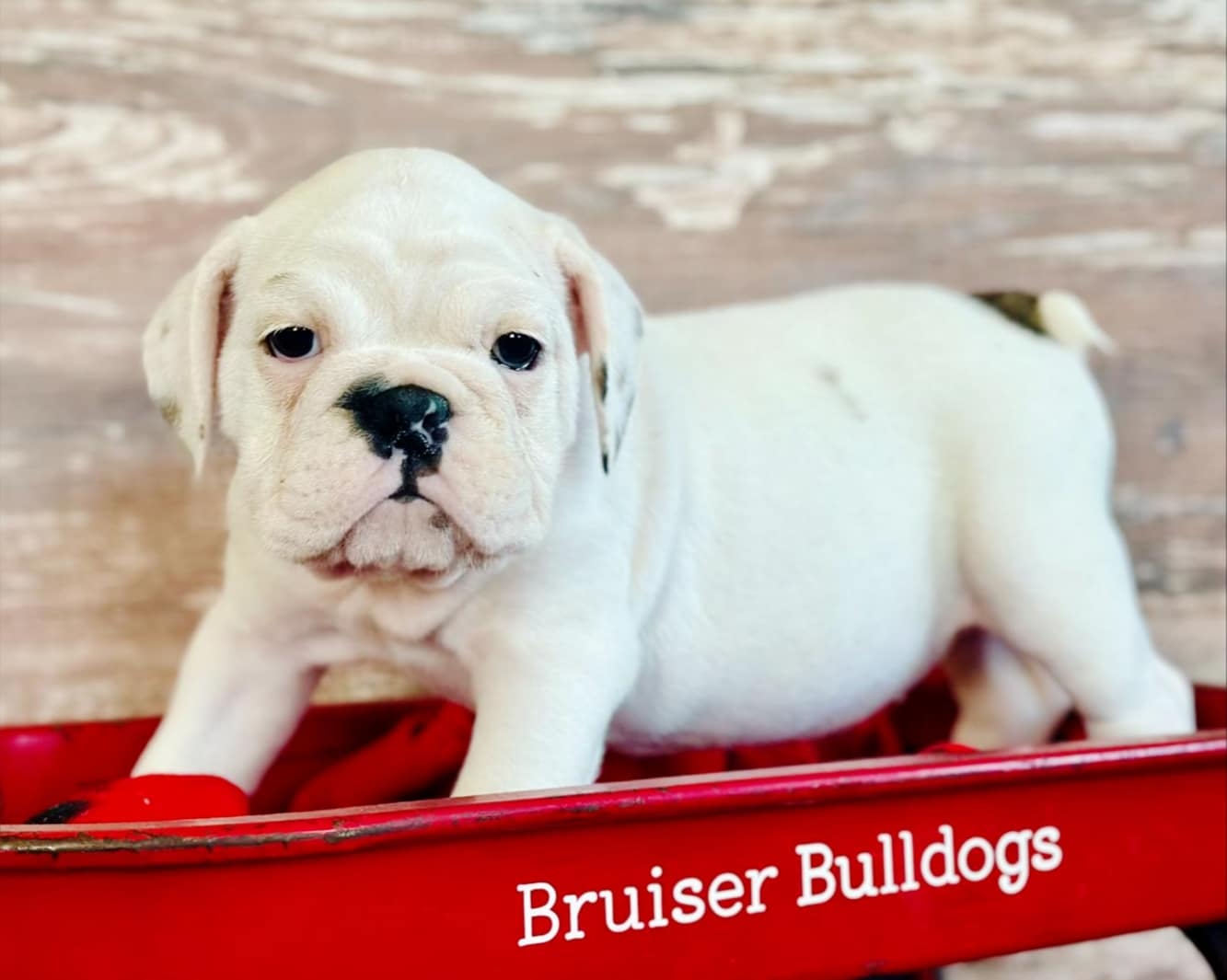
New Litter Updates
Be the first to know about new litters and puppy pictures. Subscribe now!
Our Breeding Philosophy: Health First, Statistics Matter
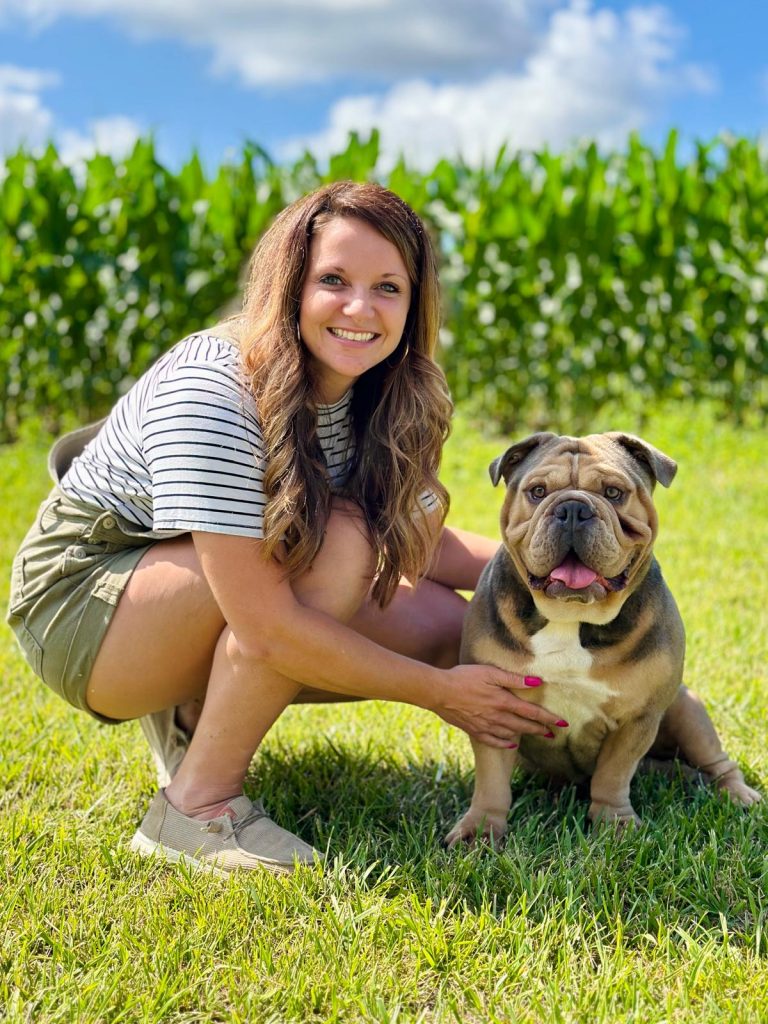
At Bruiser Bulldogs, our approach to reducing eye problems—and indeed all health issues—rests on two fundamental principles:
1. Health as the Primary Breeding Criterion
While appearance, temperament, and other qualities matter, health always comes first in our breeding decisions. This means:
- No exceptions: Even an exceptional bulldog with the perfect look and temperament is excluded from our breeding program if it has experienced eye health issues.
- Long-term vision: We prioritize the long-term health of the breed over short-term goals like winning show championships or producing puppies with extreme “typey” features.
- Whole-dog approach: Eye health is considered alongside other health factors to produce bulldogs that are healthy in all respects.
2. Meticulous Record-Keeping and Statistical Analysis
Unlike many breeders who rely on anecdotal evidence or limited observations, we maintain extensive records that allow us to:
- Track health across generations: We can see patterns emerging across multiple generations, not just in immediate offspring.
- Identify carrier status: Sometimes a dog that doesn’t show a problem itself can still pass it to offspring when paired with certain partners.
- Measure improvement: Our statistical approach allows us to quantify our progress in reducing eye issues over time.
- Make evidence-based decisions: Breeding pairs are selected based on data, not just appearances or assumptions.
Breaking the Cycle: Challenging Industry Norms
The sad reality is that many bulldog breeders continue practices that perpetuate eye problems in the breed:
- Breeding affected dogs: Dogs with corrected cherry eye or other conditions are still used for breeding, passing on genetic predispositions.
- Prioritizing extreme features: Some breeders actually select for the very features (extremely flat faces, heavy wrinkles) that cause eye problems because they win in certain show rings.
- Blaming the environment: Rather than acknowledging genetic components, some breeders place all blame on environmental factors, absolving themselves of responsibility.
- Accepting problems as “normal”: Too many breeders and owners have come to view eye surgeries as a routine part of bulldog ownership rather than a preventable problem.
At Bruiser Bulldogs, we’re challenging these norms through both our breeding practices and by sharing our knowledge and results with the broader bulldog community.
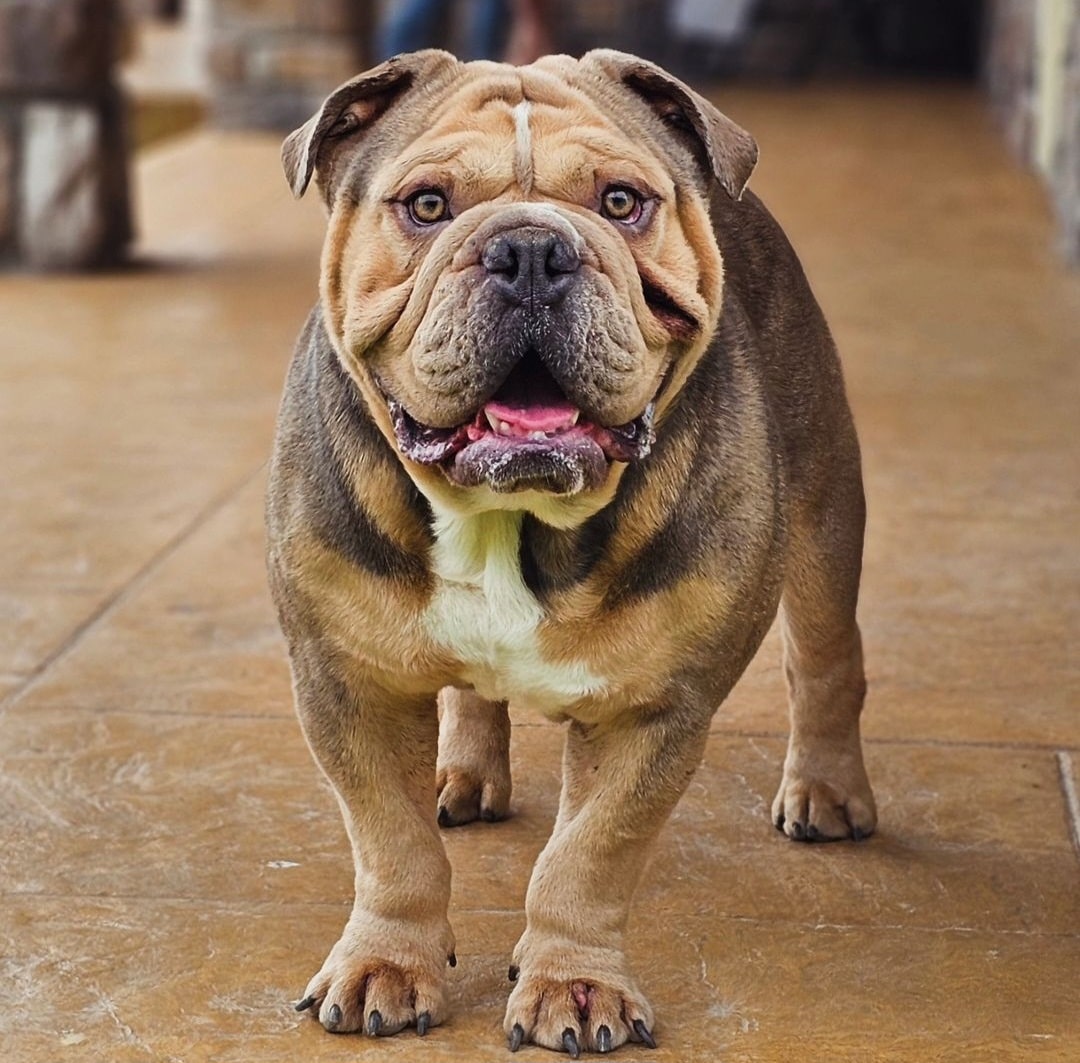
Results That Speak for Themselves
Our commitment to breeding healthier bulldogs has produced measurable results:
- Cherry eye reduction: From a breed average that can exceed 15-20% in some lines to just 1-1.5% in our bulldogs.
- Entropion near-elimination: Less than 0.5% of our bulldogs develop entropion, compared to much higher rates in more extremely typed bulldogs.
- Overall eye health improvement: Across all four common eye conditions, our bulldogs show dramatically lower incidence rates.
- Reduced veterinary intervention: Our puppy owners report significantly fewer eye-related veterinary visits and surgeries.
- Better quality of life: Most importantly, our bulldogs enjoy better vision, greater comfort, and reduced suffering throughout their lives.
Conclusion: A Vision for a Healthier Bulldog Future From Mitch
The English Bulldog doesn’t have to be synonymous with eye problems. Through responsible breeding practices focused on health rather than extreme physical features, we’ve demonstrated that it’s possible to produce bulldogs that maintain their lovable character while enjoying much better eye health.
For prospective bulldog owners, our message is clear: demand more from breeders. Ask about their health testing protocols, request statistics on eye problems in their lines, and avoid breeders who dismiss health concerns or claim that conditions like cherry eye are “just part of owning a bulldog.”
For fellow breeders, we extend an invitation to join us in prioritizing health over extreme physical traits. The statistical tracking and strict breeding protocols we’ve implemented at Bruiser Bulldogs can be adopted by any breeder committed to improving the breed.
The future of the English Bulldog depends on breeding decisions made today. At Bruiser Bulldogs, we’re proud to be breeding that future—one with a clear, comfortable vision for generations of bulldogs to come.
This article is based on over 15 years of breeding experience and health data collection at Bruiser Bulldogs. Visit bruiserbulldogs.com to learn more about our breeding program and available puppies.